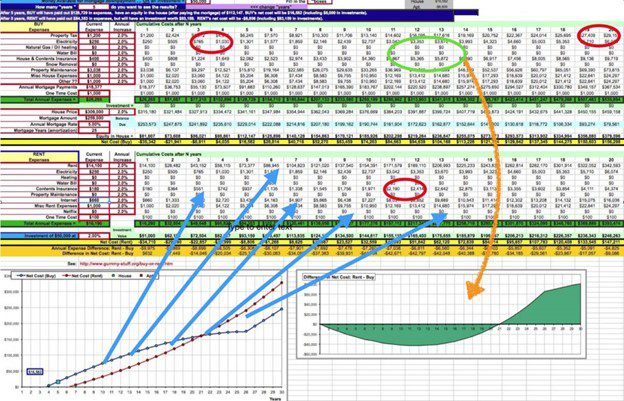When is it time to stop using spreadsheets?
We love spreadsheets!
Many data centre operators are still using Excel spreadsheets to manage their data centre. And up to some point this might not even be the worst solution. There are some symptoms however that you should take notice of to remind you of more professional tools. Let’s look at some examples:

kWh Administration
These days most data centres forward their energy costs by deploying intelligent PDUs with kWh-meters. These are pretty accurate so it should give the right data for invoicing. You register the kWh value at the end of each month and distract the value of previous month. That way you know the consumption of last month. Simple and straightforward you think. Excel can take care of it easily.
But what happens when a new customer arrives. They hardly ever arrive on exactly the first day of the month. So, your starting point is not necessarily equal to last month’s status. You need the status of the day this new customers starts using energy. That already makes things a bit more complicated in Excel. A common resolution for this situation is to NOT invoice this first (partly) month and start the the real invoicing at the next (full) month. You can probably make a quick calculation how much you throw away doing this. In a larger co-location facility this soon leads to an eyebrow-raising amount of money.
Now lets make things a bit more complicated: A PDU needs replacement, because it’s broken or needs an upgrade for another model. What happens when this is a PDU that was already used in another rack and the kWh count is much higher than the original one? The customer is now faced with an outrageous bill for energy consumption with all the commotions that comes from that. The alternative is a replacement by a new PDU. The kWh counter commences from zero. Your spreadsheet will show a NEGATIVE energy consumption this month. If there is no manual control mechanism, your customer receives money, instead of paying. This is not just a hypothetical situation, we have seen this happening time and again.
These are just a couple of basic examples where a DCIM has a very short ROI.
Capacity Management in Data Center
Capacity management is also something that is still based on (often huge and complex) excel sheets. It usually starts of as a very simple tool that becomes bigger and more complex over time. Most of the times there is only one, maybe two people around that truly understand how this spreadsheet works. But hey, it was helpful in the past so why wouldn’t it be in the future….?
Well, the problem with that spreadsheet is that it is based on input from the past. It never operates in real time and human mistakes are not included in the equations. When the data centre grows, the numbers in the spreadsheet grow as well, just as the offsets of these numbers. Up to a point where the outcome has lost its relationship with the truth. The tricky point with capacity management is that is usually is not that critical at the beginning phase of a data centre. Everything has been over-designed at that point.
But as the floor is filling up with equipment (and more changes take place) capacity management becomes more critical, and more complex. The point where your spreadsheet just can’t keep up with reality passes very quickly, perhaps even without you noticing it. Only at the moment that you are confronted with the wrong assumptions in your spreadsheet and real capacity problems occur, you realise that you lack the control mechanisms a DCIM would have provided. Problems could have been predicted much sooner. The cost of not having enough capacity is hard to calculate. It is always ‘too high’, that’s for sure.
Cable Management in Data Center
The last example that we will share with you is cable management. Everybody who has worked in a data centre knows the complexity of cable management. Of course, a spreadsheet can be very helpful at the beginning but the amount of patch cables and fibre optics connections increase at a much higher rate than the growth of your data centre. The more 19” cabinets you fill the more changes take place in your data centre. Soon your spreadsheet will have some small ‘blind spots’ where the data is not 100% up to date.
Unfortunately, you simply never get the time to mend this and you blind spots get bigger and bigger. You face with the ‘wood chopper dilemma’: Your axe is getting blunt. You should sharpen it, but you can’t chop wood when you sharpen your axe. Do you continue chopping with a blunt axe or do you stop and sharpen your axe instead? Most people will continue chopping up to the moment that the axe simply has become useless. So will your spreadsheet. In hindsight, you would have decided to upgrade to a new tool and save your company a lot of money by spending some on better (sharper) tools.
Conclusion
Spreadsheets have their benefits when you are trying to capture the operational procedures of your data centre. But soon, and much sooner than most realise, the spreadsheets won’t keep up with the day to day reality of your operation. Be aware of this and make sure that you look around for more appropriate tools before your spreadsheet collapses and leaves you facing high costs and angry customers. Think of the wood chopper dilemma. Keep your axe sharp at all times!
Let’s discuss your data center requirements


